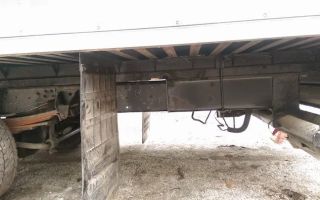How Does Tire Tread Depth Affect Flat Tires and Your Vehicle’s Safety?
As a car owner, it's easy to overlook the importance of tire tread depth until you experience a flat tire or worse—a blowout on the highway. Tire tread depth plays a crucial role in the safety, performance, and longevity of your vehicle’s tires. In this article, we’ll explore how tire tread depth affects flat tires, what can happen if your tread is too low, and how tire maintenance can keep you safe and avoid the need for emergency roadside assistance or towing services.

MR. TIRE INC.
2078 New York Ave, Huntington Station, NY 11746, USA
1. Understanding Tire Tread Depth and Its Importance
Tire tread depth refers to the measurement of the grooves or channels in the tire’s surface that make contact with the road. The tread is designed to grip the road, ensuring better traction, especially in wet or slippery conditions. The deeper the tread, the better the grip and traction your tire will have. As the tread wears down, the tire becomes less effective at channeling water and preventing hydroplaning, which increases the risk of a flat tire or even an accident.
Real-life example: Lisa was driving her car in the rain when she suddenly lost control of her vehicle. After the incident, she discovered that her tires had very little tread left, which caused her car to hydroplane and ultimately resulted in a flat tire. Had Lisa been more aware of the condition of her tires, this accident could have been avoided, and she wouldn’t have needed emergency towing services to get her vehicle off the road.

MR. TIRE INC.
2078 New York Ave, Huntington Station, NY 11746, USA
2. How Worn Tire Tread Leads to Flat Tires
Flat tires often occur when the tread depth is too low to provide adequate grip or support. With less tread, the tire cannot properly distribute the weight of the vehicle, causing the rubber to wear unevenly. In extreme cases, this uneven wear can lead to blowouts or punctures, especially if the tire encounters a sharp object like a nail or a pothole. This can result in a sudden, unexpected flat tire that leaves you stranded on the side of the road.
Consider Jake’s experience: he had been driving with worn tires for several months, unaware that his tread depth had dropped below the recommended limit. One afternoon, while navigating a bumpy road, one of his tires blew out, and he was forced to call for a tow truck. Not only was this inconvenient, but the cost of replacing all four tires was much higher than it would have been if he had simply replaced them sooner.
3. The Legal Aspect: Minimum Tire Tread Depth Requirements
In many states, there are legal requirements for the minimum tread depth of tires. For example, in the United States, the legal minimum for tire tread depth is typically 2/32 of an inch. However, experts recommend replacing tires when the tread reaches 4/32 of an inch, especially for wet conditions. Driving with tires below these legal and safety thresholds can not only put you at risk of a flat tire but also lead to costly fines or legal trouble if you're involved in an accident.
A real example of legal consequences: Mark was pulled over by a police officer for a routine traffic stop. Upon inspecting his tires, the officer noticed that the tread depth was well below the legal limit. Mark was issued a ticket and advised to replace his tires immediately. Not only did this put him at risk for a flat tire or other accidents, but it also cost him money in fines and the hassle of replacing his tires.
4. Preventing Flat Tires: How to Maintain Proper Tire Tread Depth
Regular tire maintenance is essential for preventing flat tires and ensuring the longevity of your vehicle. Here are some key steps to take to maintain proper tire tread depth and avoid the inconvenience of unexpected tire failures:
- Inspect your tires regularly: Check the tread depth using a tread gauge or the penny test, where you place a penny into the tread grooves with Lincoln’s head facing down. If you can see the top of his head, your tread is too shallow.
- Rotate your tires: Regular tire rotation ensures even wear across all four tires. This can extend the lifespan of your tires and help avoid uneven tread wear that could lead to flat tires.
- Replace worn-out tires: If your tires are nearing the minimum tread depth, replace them immediately. It’s better to invest in new tires than to deal with the cost and hassle of a flat tire or a blowout on the road.
For example, Steve made it a habit to regularly check his tires using a tread depth gauge and rotate them every 6,000 miles. This preventive measure saved him from dealing with a flat tire and kept him from needing emergency roadside assistance. When Steve’s tires reached their wear limit, he replaced them proactively and avoided the hassle of a blowout that could have led to more serious damage or an accident.
5. When You Need Towing Services: How Professionals Can Help
Even with the best maintenance, there may be times when you experience a flat tire on the road. Whether you’re dealing with a worn-out tire or an unexpected blowout, professional towing services are a valuable resource when you find yourself stranded. A reliable towing company can quickly transport your car to a repair shop or assist with tire replacements, saving you time and effort. It’s important to have a trusted towing company on standby so you can handle emergencies with ease.
If you find yourself with a flat tire and no spare, consider reaching out to a professional towing company like Chuckles Rescue & Towing. They offer fast, reliable services to help you get back on the road without the stress of waiting for help for hours. Their emergency towing services and tire replacement assistance are designed to make your life easier, especially during unexpected situations.























